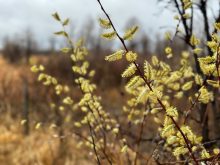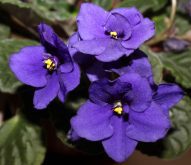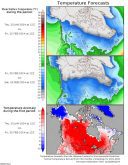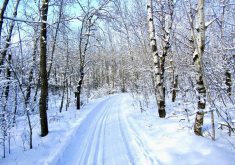Some critters are just made for winter, while others can’t wait for spring.
In the dead of winter, we may think that local wildlife are toughing it out, pining for the longer, warmer days of spring. While that is true for some, many of our native species are doing just fine.
My early university studies were pretty dry, but the budding biologist in me knew the payoff was in my fourth year when I could take courses like mammalogy, which was taught by an eminent boreal forest ecologist.
Read Also
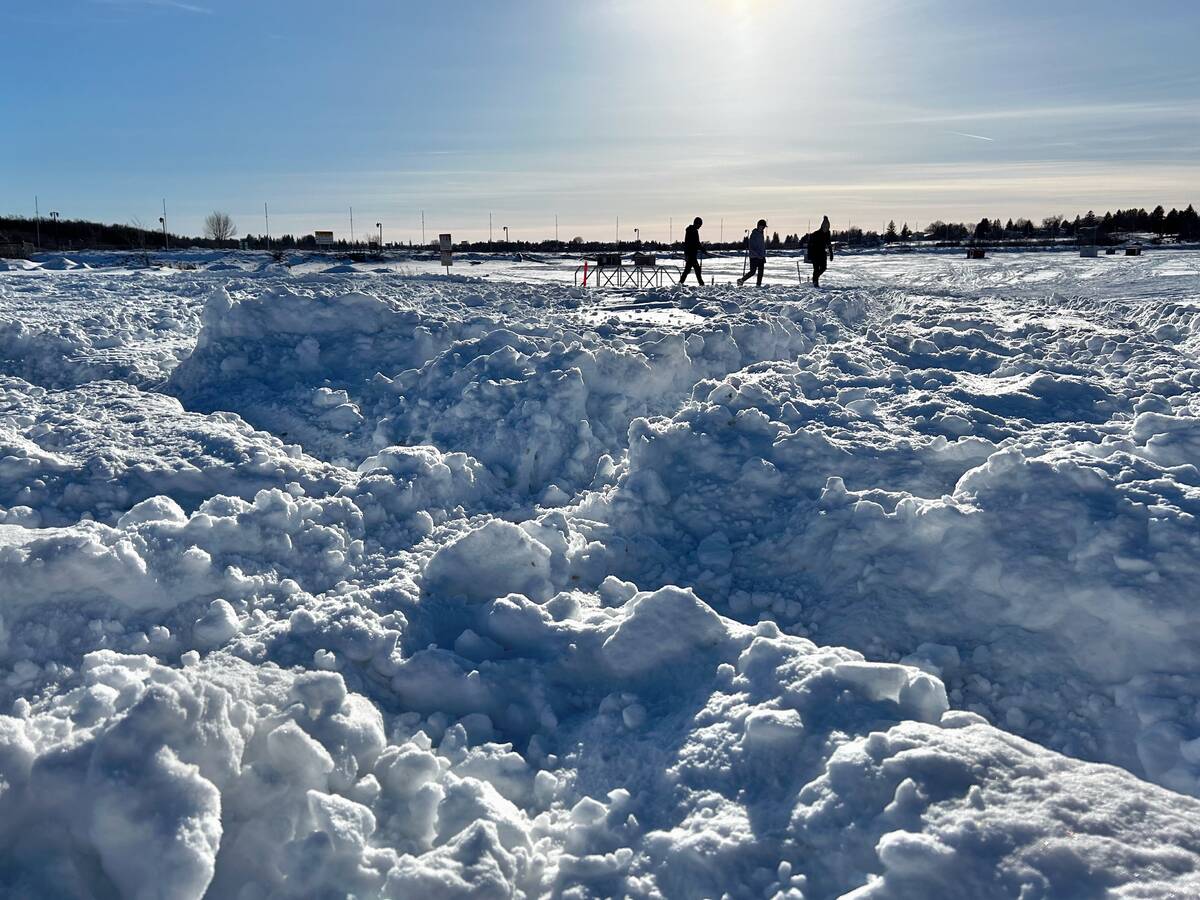
Predicting Manitoba winter snowfall
How much snow should farmers in Manitoba expect for the rest of December 2025 and into January-February 2026? Here’s what the weather models say about the winter to come.
It turned out that the first half of that course was a bit like an academic boot-camp, where we were force-fed heaps of basic mammal biology and evolution that seemed to be of little use to us impatient ecologists-to-be. Interestingly (and forty-five years later), I still remember that mastodon molar teeth had distinctive, cone-like cusps, but mammoth molars were ridged and washboard-like . . . or is it the other way around? But I digress.
But the boreal ecology section was the payoff: it was a window to understanding how cold and snow shapes the physical and behavioural adaptations that separate winter winners from winter losers.
Our professor had developed his own naming systems for the ecological fundamentals: the critters with specific winter adaptations are chionophiles (from the Latin chiono, for snow); those whose strategy is to avoid winter are chionophobes. The ones that struggle without any particular advantages are chionophores, those in-between species whose survival depends on winter’s severity.
The miracle called snow
Snow is a fundamental driver of our natural world, but its ecological implications have not been studied as much as you’d think. Our professor lamented that most ecologists put their sampling gear and field notebooks away come autumn.
It’s a remarkable insulator, capturing the earth’s heat at the ground surface. About 12 inches are enough to keep ground temperatures hovering just below freezing. This micro-climate is the reason why our resident small mammals – voles, mice and shrews – can stay active and sometimes even raise young in winter. When folks started looking, they also found that some insects and spiders were still moved about. Without snow, there would be very few small mammals surviving in these parts.
Look closely at a snow profile in a forest or meadow and you’ll see that the ground layer is granular and has small cavities around plant stems and litter. Small mammals can easily tunnel through it to forage and access food caches. Our professor had adapted Inuit words that precisely differentiated snow types: the granular layer at the bottom is called pukak.
Because of snow, mid-sized predators have a decent food supply, but only if they can figure out how to catch them. Foxes can actually hear the critters scratching and squeaking below the snow, and have perfected a vertical jump that finishes with a head-first dive down to the source of the sound. Often enough, they are rewarded with a mouse between their jaws. I have been lucky to watch this play out a few times. Combine a successful hunting technique with long, dense fur, and winter becomes tolerable.

The great gray owl, Manitoba’s provincial bird, also keys in on voles with similar hunting tactics. Recent research has found that their large facial disks are especially effective at capturing low frequency sounds which travel best through deep snow. Like foxes, they finish an aerial attack with a vertical plunge, but they do it feet-first, instead of with a face-plant.
The avoiders
There is a large group of birds – all the water birds, shorebirds, warblers, most sparrows and many birds of prey – that fly south to habitats which are a reasonable match to their summer requirements. It is mostly because they can’t handle cold temperatures and their food supplies become unavailable.
If you can’t escape winter, sleeping through it also works. This approach requires gobs of fat and the ability to burn it as slowly as possible. Our native ground squirrels come close to true hibernation, significantly lowering body temperatures and metabolism from mid-October to late April. Black bears are not considered true hibernators, but their heart rate drops to about 10 beats per minute and they don’t make their way out of their dens until spring. In case you’re wondering, they don’t poop, but they come out in spring looking for a good squat to evacuate the poop plug that has helped keep the den clean.
One of the more interesting chionophobes is the beaver. Their remarkable engineering feats are important adaptations during the open water season but are also critical to surviving winter. Living under the ice in ponds or wetlands is a very effective avoidance of cold and snow, providing you can move around and feed. Dams help keep beaver ponds from freezing to the bottom and beaver feed piles, consisting of willow, aspen and other tree and shrub submerged the previous fall, provide the calories. When they are not sleeping, winter life consists of trips between the main lodge, the feed pile and bank holes where sticks are gnawed down.

Muskrat adaptations are similar, but their dens are either burrowed into riverbanks or are in the middle of a large pile of reeds surrounded by water. They must root around for marsh plants all winter because they don’t build stockpiles. In marshes, they will also build small hauling-out spots at freeze-up – trappers call them ‘push-ups’ – with a dome of vegetation on top of the ice. They are accessed through plunge holes that are kept open all winter. A good accumulation of insulating snow helps keep these structures viable.
Back in the days when I trapped, I noticed that beavers and muskrats built up fat reserves through the winter. It suggested to me that winter isn’t exactly a high-stress period, providing the ice doesn’t get too thick and mink or otters aren’t on the prowl below the ice. By the way, if you are an adventurous wild game epicure, take a March muskrat over a December critter, as they are the plumpest and juiciest.
Jumping into winter
Some of our chinophiles are easily identified by colour changes. Snowshoe hares, whose wide feet give them a leg up on winter, also grow white winter coats as camouflage. Compare that package to cottontail rabbits, whose range only just makes it into southern Manitoba, and you can see the advantages. Cottontails have small, dainty feet and their brown pelage stands out. Basically, without energy-rich foods and some human infrastructure, cottontails wouldn’t survive in these parts. Harsh winters reduce their numbers significantly.
Sharp-tailed and ruffed grouse, hardy native residents, also come built for winter. In addition to thick down and long, soft feathers that grow down to their feet, they also grow bristly pectinations between their scaly toes to help their feet function like snowshoes.
Perhaps their most effective adaptation is their use of snow dens for day- and night-time roosting. The Finns call these dens kieppis. If you see a spot in soft snow that looks like someone threw in a large softball, and somehow it came out again about foot away, that would be a kieppi. The birds often fly right into the snow, and then fly out again. Sharp-tails move from open country into nearby forest cover in winter, where there is softer snow.

Under the snow, temperatures can get close to the freezing point and the grouse are hidden from predators like owls and goshawks. Open a kieppi and you can see if it was used during the day or night. Day roosts only have poops that are hard, curly and fibrous, while night roosts will also have some soft, dark stools. The latter come from the part of their digestion tract – the diverticula – that functions a bit like a ruminant’s stomach to get the most value from low-nutrient foods.
One time while cross-country skiing, I noticed a kieppi next to the trail. It looked odd because there was only one hole. Thinking the bird had come out the way it came in, I casually poked it with my ski pole, only to have a ruffie burst out and fly away. It surprised the heck out of me, but I know the poor grouse got the worst of that exchange.
These birds also shift to foods that are nutritious and well above the snow. The main course is catkins – the little nubbins on branches that grow to become male or female flowers in the spring. The male catkins of trembling aspen are especially important. If you compare our hardy native grouse to the introduced gray, or Hungarian, partridge, the latter eats seeds that are easily covered by snow. And they don’t use kieppis, which makes for a double whammy in cold, snowy winters. By comparison, winter is just another season to which our native grouse are supremely adapted.
There is a mixed bag of birds, sometimes called ‘erratics’ for their nomadic wanderings, that do well in our winters, but they may travel great distances to find their preferred foods. Snowy and great gray owls may show up in numbers in an area one winter, but be absent the next. This is driven by the availability of mice and voles, whose numbers can fluctuate wildly from year-to-year and place-to-place.
Bohemian waxwings are among my favourite winter wanderers. These pretty songbirds travel in flocks to find frozen fruits and berries. My neighbours have mountain ash trees that get mobbed at some point every winter by up to a hundred twittering waxwings. After a couple of days at most, the trees are stripped and the birds move on. Occasionally, winter fruits ferment and waxwings can be affected. I have never seen boozy bohemians, at least not the feathered kind, but stories abound about waxwings DUI-flying under the influence, so to speak.

On the edge
Our white-tailed deer definitely fall into the ‘tweener’ category. They have winter adaptations, but they don’t hold up to the harsher winters that our region will dish out. Their winter coat combines dense underfur and longer, hollow guard hairs that provide excellent insulation. One time I came across some deer bedded down during a snowfall. Completely covered with snow, they just looked like odd white forms. But when they stood up and shook, the snow flew off like it was fluff. Deer don’t ‘ice-up’ just because it is snowing.

But their winter coats are not enough when the cold really sets in. Unless they have access to grain or high-quality domestic forage, lower-energy browse may not provide sufficient calories to offset energy losses. Deer respond by curtailing their travels significantly and enter into what has been called ‘walking hibernation’. Animals coalesce in groups – ‘yard-up’ is a term often used – and stick to established trails to conserve energy. Metabolism may drop to half of normal, and the animals are now relying on dwindling body reserves to make it through to snowmelt and the first green-up.
Deer managers calculate a winter severity index, which basically adds up the period of cold-temperatures and deep snow, and it’s a pretty good predictor of winter survival. Fawns generally perish first, followed by bucks that were already in poor shape after the fall mating season. Deer numbers can bounce back fairly quickly after one hard winter, but deer managers may start restricting hunter harvests after back-to-back hard winters.
When you look beyond the fact that it is cold and snowy out there these days, it’s interesting to know that many of our wild critters are actually doing just fine. They are built for the conditions at hand, and many will make it through to warmer times.




